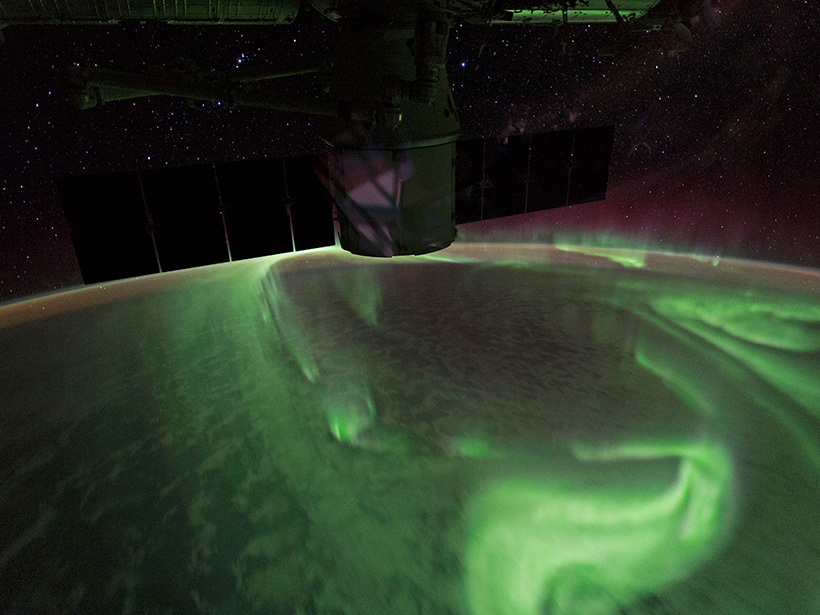Source: Journal of Geophysical Research: Space Physics
The most spectacular auroras are produced by electrons zipping from space into Earth’s atmosphere. Although Earth’s magnetic field repels most electrons before they reach any wisps of air, under special conditions they can penetrate into the atmosphere, striking air molecules and causing them to glow.
But how exactly those electrons, which normally circulate in Earth’s magnetic field, are accelerated or pushed down into the atmosphere is not fully clear.
It’s generally agreed that there are three main ways to generate this “auroral precipitation.” One is small pockets of strong electric field high above Earth—also known as quasi-static potential structures (QSPS)—which can whisk them down. Another is strong waves in Earth’s magnetic field in which field lines vibrate like a plucked string—called Alfvén waves—propelling the charged particles along. These two mechanisms produce the most intense bands, curtains, and sheets of auroras.
The other main cause is higher-frequency waves in Earth’s magnetic field that don’t increase electrons’ speed but scatter them, nudging the particles into trajectories that carry them down into the atmosphere. Wave scattering produces a less vivid, diffuse auroral glow but is commonly thought to be responsible for the bulk of the total auroral energy.
But it’s difficult to decipher which of these three is happening at any given time. They can be identified only indirectly by analyzing spacecraft data measurements. Plus, these different mechanisms can occur simultaneously, which researchers have been unable to disentangle.
Now, Dombeck et al. have developed a classification scheme that resolves many of these ambiguities and can detect multiple mechanisms. Their method used 13 years of data from NASA’s Fast Auroral Snapshot Explorer (FAST), a satellite launched into Earth orbit in 1996. Crucially, its instruments can observe electrons traveling both down toward Earth and up into space. In contrast, the previous, widely used scheme was based on data from satellites that could measure only downward traveling electrons and could identify only a single mechanism at a time.
Being able to see upward traveling electrons makes it easier to determine whether they were accelerated by electric field structures or magnetic field vibrations, as the former reflect upgoing electrons back toward Earth and the latter do not. When the team compared their results, they found that misclassifications were common under the previous scheme.
Applying their method to FAST data paints a complex picture of electron precipitation: Most of the time, multiple mechanisms contribute, and frequently, all three appear in intense auroral storms.
Intriguingly, their results may also contradict the view that wave scattering contributes most of the energy of electron precipitation: The authors found that on Earth’s nightside, two thirds of the energy input comes from intense precipitation that is mostly caused by QSPS and Alfvén waves.
Using this new method to better understand the mechanisms responsible for auroral precipitation will also help scientists better understand how Earth’s magnetic fields interact with the stream of charged particles coming from the Sun and how this interaction produces hazardous solar storms. (Journal of Geophysical Research: Space Physics, https://doi.org/10.1029/2018JA025749, 2018)
—Mark Zastrow, Freelance Writer
Citation:
Zastrow, M. (2019), Bringing clarity to what drives auroras, Eos, 100, https://doi.org/10.1029/2019EO121139. Published on 24 April 2019.
Text © 2019. The authors. CC BY-NC-ND 3.0
Except where otherwise noted, images are subject to copyright. Any reuse without express permission from the copyright owner is prohibited.

